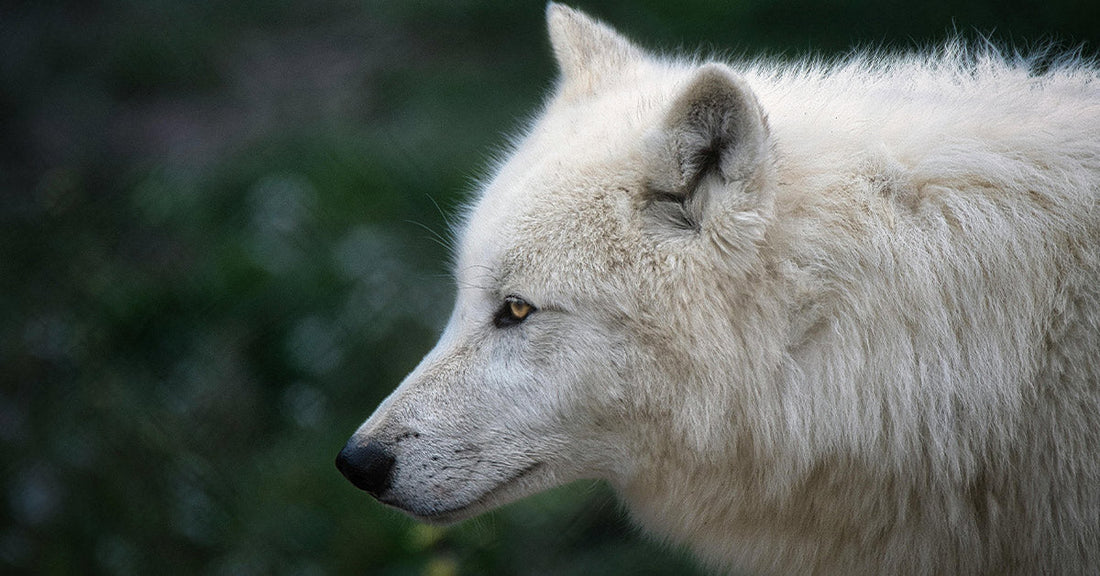Scientists Bring the Dire Wolf Back from Extinction After 13,000 Years
Matthew Russell
More than 13,000 years after disappearing from the American wilderness, the dire wolf has returned—at least, something very close to it. In late 2024 and early 2025, three pups—Romulus, Remus, and Khaleesi—were born through a process scientists call de-extinction, powered by gene editing, synthetic biology, and a bit of pop culture flair, The New York Times reports.
These animals are not direct clones of dire wolves. They are genetically engineered gray wolves whose DNA has been edited to mirror key traits of their Ice Age ancestors. The company behind the breakthrough is Colossal Biosciences, a Texas-based startup with billion-dollar backing and an ambition to rewrite the fate of extinction itself.

The dire wolf has returned after 13,000 years of extinction.
Science Fiction Becomes Science Fact
Colossal's team began by isolating DNA from two fossilized remains: a 13,000-year-old tooth from Ohio and a 72,000-year-old ear bone from Idaho. These ancient samples revealed genetic markers that set dire wolves apart from modern canines, including adaptations for size, strength, and their thick, pale fur. Using this blueprint, scientists rewrote 20 genes in the cells of gray wolves to express those traits, TIME explains.
No ancient DNA was directly inserted. Instead, the edited genes were transplanted into ovum cells, and the embryos were implanted into surrogate hounds. The result: living animals with distinctive dire wolf features, including massive frames, wide skulls, powerful jaws, and unique vocalizations—such as a howl not heard for millennia, according to the The New Yorker.

Living Like Wolves, Not Dogs
Romulus and Remus, now six months old and weighing around 80 pounds each, are already larger than typical gray wolves their age and are expected to reach 150 pounds at maturity. Unlike dogs, they keep their distance from humans. Handlers report they flinch when approached and show no signs of domestic behavior—a signal that their instincts remain wild, TIME reports.
These pups live in a sprawling, 2,000-acre ecological preserve at a secret location in the U.S., monitored by veterinarians and animal behaviorists. Their diet—raw meat and nutrient-rich puppy chow—mimics the natural kill-and-scavenge pattern their ancestors once knew. But they are not being taught to hunt or survive in the wild. Instead, their existence is carefully controlled, more scientific marvel than wilderness restoration, according to ABC News.

The pups were born through surrogate hounds in a Dallas lab.
A Moral Experiment in Real Time
Colossal is not shy about its ambitions. Alongside dire wolves, the company is actively pursuing the resurrection of the woolly mammoth, dodo, and thylacine. Co-founder and CEO Ben Lamm frames their work as a moral imperative.
“We are currently the apex predator,” he told The New Yorker. “Why not use our technology for good?”
That argument isn’t universally accepted. Critics, including wolf researcher Julie Meachen, caution that animals like Romulus and Remus may resemble dire wolves physically, but their behavior and ecology cannot be truly replicated without their original environment and kinship networks.
“What we have is something new,” she told ABC News.
Others warn of the dangers inherent in this kind of genetic engineering. Robert Klitzman, a bioethicist at Columbia University, highlighted potential risks, from organ defects to unpredictable behavior. “There’s a lot of suffering involved in that,” he told TIME. “There are going to be miscarriages.”

The pups are 25% larger than modern gray wolves.
Conservation Meets Innovation
Colossal isn’t focused solely on extinct species. Alongside the dire wolves, it has cloned four red wolves—one of the most endangered canids in the world. With fewer than 20 red wolves remaining in the wild, primarily in North Carolina, the species suffers from a lack of genetic diversity. Colossal hopes its "Ghost Wolf" project, which reintroduces long-lost red wolf alleles through hybrids found in Texas and Louisiana, can fortify the population, The New York Times confirms.
This approach may also help other struggling species. By understanding how to restore lost traits through precise gene editing, Colossal scientists hope to make endangered animals more resilient—giving conservationists a new weapon in the fight against extinction, ABC News reports.
Not Quite Jurassic, But Just as Bold
Romulus, Remus, and Khaleesi may never roam free or hunt mammoths like their ancestors, but they are proof that what was once lost can be reimagined. Whether this should be done is a question still hanging in the air.
As Colossal pushes forward with plans to bring back woolly mammoths by 2028, the implications ripple beyond science fiction. The dire wolf is back. What happens next is still up for debate.

